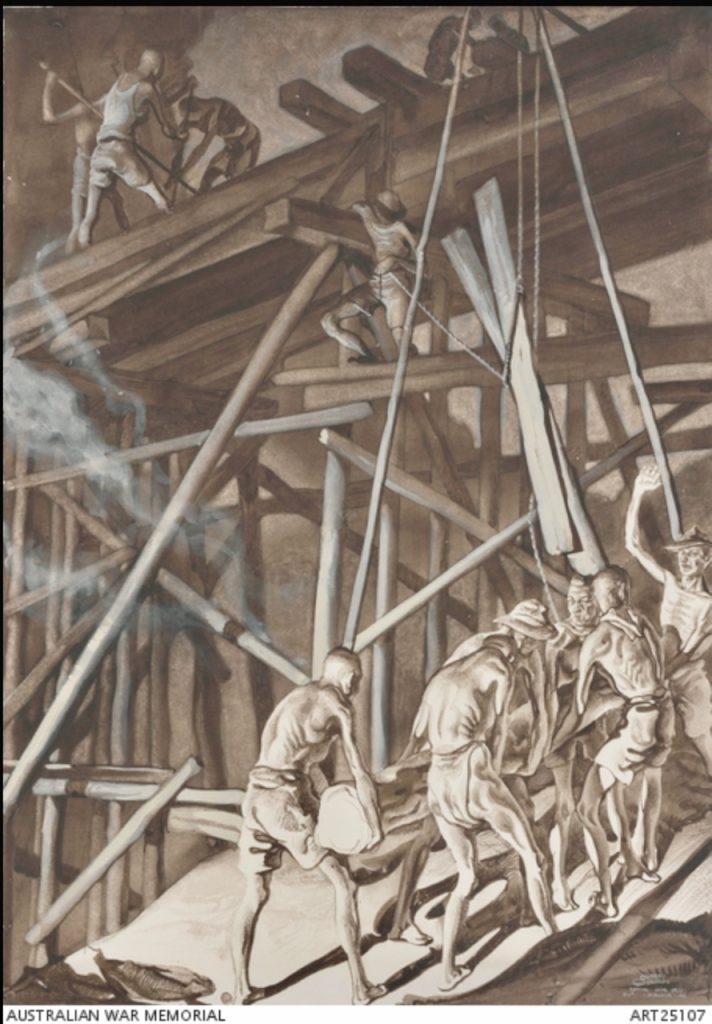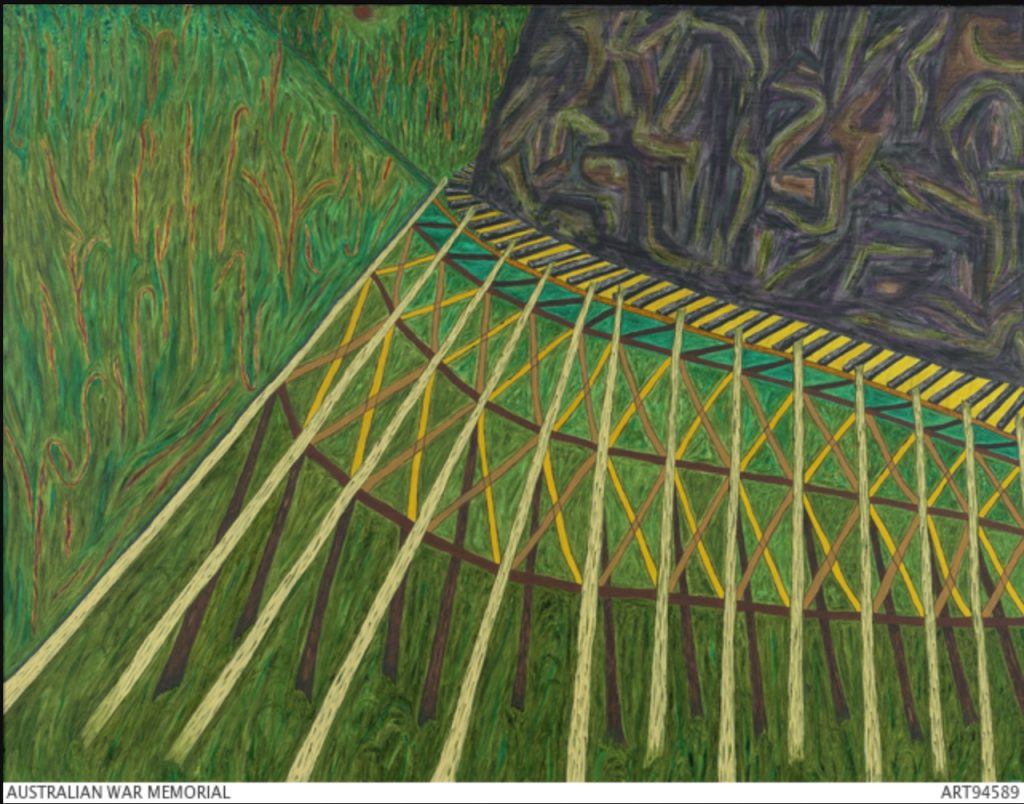
Above: Official War Artist Murray Griffin was horrified by the condition of the men returning to Changi from the railway. This work refers to the famous tightrope walker, ‘The Great Blondini’ from the early 1900s, but with a darker twist. Here, Griffin depicts the perilous conditions on the railway, which he was told about back in Changi prison by survivors of the atrocity. The men, in their emaciated state, were forced to work in treacherous conditions to complete the railway for the Japanese. In this work, Griffin uses his composition to draw comparison to the depths of hell, a theme he expressed in many of his Burma-Thailand railway works.

Prisoners building a bridge on the Burma-Thailand railway. Although Griffin volunteered to work on the Burma-Thailand railway, he gave up his spot for a fellow prisoner and remained in Changi. He created this series based on survivors’ testimony. With his use of light and shade, Griffin encapsulates the feeling of hell and despair.

Pack of Cards.

